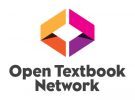1 Not Just Another Textbook
So, you’ve decided to write and self-publish a textbook. And not just any textbook — an open textbook. Before you begin, it’s important to understand the differences between an open textbook and a standard textbook, and how these contrasting characteristics might affect the open textbook author and publishing process.
Open vs. closed
Open textbooks are open educational resources or instructional resources created and shared or published in ways that allow more people to access them. They reside in the public domain — where copy rights have been waived by the copyright holder or copyright has expired — or have been released by the copyright holder under an open-copyright licence; both of these circumstances permits free use and repurposing by others. This prototype is different from how copyrighted materials are typically managed. (See Copyright and Open Licences.)
The traditional textbook-publishing model assumes that the author owns copyright for the textbook and that these rights are not shared with others. In other words, all rights are reserved so the textbook is essentially closed. If the author owns copyright, they can sell to a publisher the right to print and distribute their work. The conditions of this sale are typically outlined in a contract between the author and publisher, a document that should be reviewed by a lawyer familiar with copyright law.
On its Copyright Guidance: Copyright for Authors & Creators page [New Tab], the Yale University Library offers advice to writers who are thinking about using a publisher. They say:
Most authors of books or journal articles are required to sign an agreement with their publisher as a condition before publication. It is important to read these agreements as they are legally binding and may have an impact on how the author can use or reuse the work. Like any agreement, the publisher agreement should be negotiable so that the author retains some or all of the copyrights associated with the work.[1]
However, the distinction between publishing open textbooks, as an individual or with an open-publication press, and the more traditional textbook publishers, is beginning to blur. In a January 29, 2018 blog, David Wiley ponders:
(t)he open education community’s willingness or unwillingness to be more inclusive, welcoming, and supportive of newcomers – even those from private enterprise – will largely predict its ability to grow and have the kind of dramatic impact we all want it to have. Can you imagine a day when many of the most important contributions to many of the most important OER and open textbook projects are made by people who work for for-profit publishers and other companies, and who contribute to OER as part of their formal job responsibilities? Can you imagine a day when many of the world’s most-used OER were originally published by companies, who continue to invest in their ongoing updates and maintenance? Can you imagine a day when companies are releasing millions of new words, images, videos, and interactives under open licenses each year?[2]
Too many choices
Textbooks are often built in an online platform (software system or website) where content can easily be changed (intentionally and not) and many features can be added. Some argue that an online textbook should take full advantage of media beyond the text in a book. This alone can be stressful as one grapples with how to proceed in this sea of endless choices.
Building an open textbook adds even more alternatives to both the creator and those who are permitted to use and change the final product. The author is faced with millions of photos, illustrations, and other open educational resources from which to select and add to the textbook. Others, who want to customize the completed book — and are basically given free rein to do so — must decide what to change or add, a situation that is both exhilarating and exhausting. Trouble making decisions in an environment that presents too many options is not uncommon; in fact, it is a well-recognized cognitive process referred to as overchoice or choice overload.[3]

As a future author and publisher, you’ll want to contemplate how these factors might impact your work and approach to producing an open textbook. For instance, consider how the concept of and responsibilities for writing a textbook are different than they were before open textbooks appeared. You might think about how:
- Open textbook authors are members of the sharing community where knowledge is freely and openly distributed so that others can build upon it. The open textbook becomes community property rather than the chattel of a single owner.
- An open textbook author must accept that their work will be used and changed — often without their knowledge — actions over which they have no control.
- Open textbook authors should be willing to share editable files of their textbook in order to allow others to make changes and/or add to it in the form of an adaptation.
- As the author of an open textbook, one should remain open minded and unafraid to receive and respond to feedback. In turn, the author can use input to begin conversations that will hopefully lead to knowledge sharing and building.
- A self-publishing author should seriously consider maintaining their completed open textbook by updating content when necessary and correcting mistakes. These steps are necessary for the ongoing quality and sustainability of their book and OER in general.
The community also has responsibilities. As a member of this group, let academic integrity be your beacon and open principles your creed.
- Give credit where credit is due. Copying a colleague’s openly licensed work is not considered plagiarism; however, one should be diligent about providing an accurate, complete, and well-laid-out attribution statement for each borrowed open resource. In other words, fulfill the legal terms of the open-copyright licence by giving the original author credit for their work. (See Concerns About Plagiarism.)
- Deliver all criticism to an open textbook author in a constructive and professional manner.
- Build on the existing work in the open educational commons. Like the open textbook author, be confident when sharing your ideas about these resources with others.
___________________________________________________________________________

___________________________________________________________________________
Attributions
Meadow by geralt has been designated to the public domain (CC0).
- Yale University Library, "Copyright Guidance: Copyright for Authors & Creators" last modified June 21, 2017, https://guides.library.yale.edu/copyright-guidance/CopyrightForAuthors (accessed February 15, 2018). ↵
- Wiley, David, Weblog entry on "Reflections on 20 Years of Open Content: Lessons from Open Source," iterating toward openness, posted January 29, 2018, https://opencontent.org/blog/archives/5354 (accessed February 15, 2018). ↵
- "Overchoice," Wikipedia, last modified December 3, 2017, https://en.wikipedia.org/wiki/Overchoice (accessed February 15, 2018). ↵

